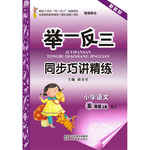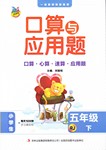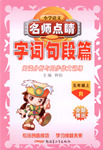题目内容
下面文章中有5处需要添加小标题,请从以下选项中选出符合各段意思的小标题,并在答题卡上将该项涂黑,选项中一项为多余选项。
A.Option of home schooling is around for a long time
B.Recent years’ growth of home schooling
C.The unpleasant situation of school education
D.Advantages in home schooling
E.Parents should be responsible for child’s education
F.Home schooling is not a perfect choice
1.Home schooling is an option that is becoming more attractive to parents as time goes on. Schools have become increasingly unstable over the past couple of decades. The textbooks are outdated, violence is common, children are shot without mercy, and the quality of education on the whole has greatly diminished.
2.The option of home schooling has been around for a long time; however, until recently it had not been so popular. The idea of home schooling seems like a cure-all to many parents due to the advantages this type of education provides over traditional schools.
3.Children who are home schooled can avoid many of the problems schools have become known for. For one, the environment is less threatening. Children can learn without fearing other students. In addition, home schooling allows parents to dictate the academic course of their children. Home schooling also allows students to proceed at their own speed. If a child is weak at multiplication and division, a parent can focus lessons on those skills in favor of another skill that the child might understand rather easily.
4.It may sound like the perfect option, but there are many disadvantages of home schooling. First of all, home schooled children are usually less socialized. While schools can sometimes be the breeding ground for poor social behaviors, school is also a place where students learn to interact with others and build social skills. In addition, another drawback to home schooling could be implementation of an educational plan. Many parents are not qualified as teachers and may not understand what is necessary to ensure a child has access to the proper curriculum.
5.Finally, another disadvantage to home schooling is the necessity for parents to take full responsibility for their child’s education. If you choose to home school your child, there is no one for you to blame if your child does poorly. The responsibility falls completely on the parent.
1.C
2.B
3.D
4.F
5.E
【解析】
试题分析:文章大意:本文是一篇议论文。通过和学校教育的对比,论述了家庭教育的优缺点。
1.C 第一段叙述了学习教科书的过时,学校暴力事件的发生,学校教学质量的下滑,所以中心是讲述学校教育令人堪忧的现状,故C选项正确。
2.B 从“The option of home schooling has been around for a long time; however, until recently it had not been so popular.”判断第二段讲述家庭教育的发展,故B选项正确。
3.D 第三段讲述家庭教育避免了学校教育的弊端,学习环境安全,可以自己安排课程,避免了学校欺凌行为,中心是讲述家庭教育的优势。所以D为正确选项。
4.F 第四段首句“but there are many disadvantages of home schooling.”然后叙述家庭教育的缺点,所以F为正确选项。
5.E 从第五段首句“Finally, another disadvantage to home schooling is the necessity for parents to take full responsibility for their child’s education”判断E为正确选项。
考点:任务型阅读的考查

 举一反三同步巧讲精练系列答案
举一反三同步巧讲精练系列答案 口算与应用题卡系列答案
口算与应用题卡系列答案 名师点睛字词句段篇系列答案
名师点睛字词句段篇系列答案下面文章中有5处需要添加小标题。请从以下选项( A、B、 C、D、E和F)中选出符合各段意思的小标题,并在答题纸上将相应选项的标号涂黑。选项中有一项是多余选项。
| A. Find a fiction book. B. Learn how to read your card. C. Find your non-fiction book. D. Decide if you want to search by author, title or subject. E. Learn to find the card you need. F. Understand the Dewey Decimal System. |
The card catalog was once found in every library. Most libraries have now replaced the card catalog with a computerized cataloging system. However, some libraries still have the set of drawers with thousands of cards inside, and some library patrons still prefer the hands-on approach to researching the information they need. Cards are set up alphabetically in long drawers. Different types of cards are kept separate from each other so you may search by author, title or subject. Learning to use the card catalog can help you find the book you want without waiting for a computer terminal.
Instructions:
1______
Once you have found the card for the book you want, write down the numbers and letters at the top of the card and the title and author of the book. The numbers at the top are how the book is cataloged using the Dewey Decimal System, and the letters are the first three letters of the author's last name. Your library will have the numbers at the end of the stacks (the shelves of books), so find the stack your book is located in, then scan the shelves of that stack until you locate the number on the card. More than one book can have the same number, so you will narrow down your search if you have the first three letters of the author's name.
2______
The cards in a card catalog reference other cards. An author card will also have a book title and subject, a title card will have the author and subject, and a subject card will have author and title. This is handy for cross-referencing, so if you want to read a book on beekeeping, you can look that up in the subject cards and find an individual card on each book the library carries on beekeeping.
3______
If you want to look up a book by Stephen King, find the author cards in your library's card catalog, and look under "K". The cards are organized by last name and are broken down into the individual drawers. Sometimes a letter will take up more than one drawer, so you may find drawers that have "Ka-Ke" and then "Ki-Kr." Stephen King will be in the drawer with "Ki-Kr." You would find a card in a similar manner by title or by subject by finding the drawer with the corresponding letters such as "Be" for beekeeping in the subject cards or "Wr" for "The Writer's Market" ("The" is not considered part of titles).
4______
This isn't required to use the card catalog, but it can make searching for your book a little easier. The numbers range from 000 to 999; 000-099 are general subjects, 100-199 are psychology and philosophy, 200-299 is religion, 300-399 is social science, 400-499 is language, 500-599 are natural science and math, 600-699 is applied sciences, 700-799 is art, 800-899 are literature and plays, and 900-999 are geography and history.
5______
The author card will have a call number at the top, a line with the author's name with last name first, then lines for the title of the book, its publisher, a brief summary and subject listings. For an author with many books like Stephen King, there will be a card for each of his books in alphabetical order. Title cards are similar but have the title first, then the author in the following line. Subject cards have the subject in all capital letters at the very top of the card and the same information as on an author's card. Many cards on the same subject will be organized by the authors' last names.

 and make a lifelong friend.
and make a lifelong friend. the neighborhood. Are strange people carrying expensive things out of one neighbor’s house? Have several days passed since your elderly neighbor last collected his newspaper? The benefit of keeping an eye out for unusual behavior in the neighborhood is that others will do the same for you.
the neighborhood. Are strange people carrying expensive things out of one neighbor’s house? Have several days passed since your elderly neighbor last collected his newspaper? The benefit of keeping an eye out for unusual behavior in the neighborhood is that others will do the same for you.